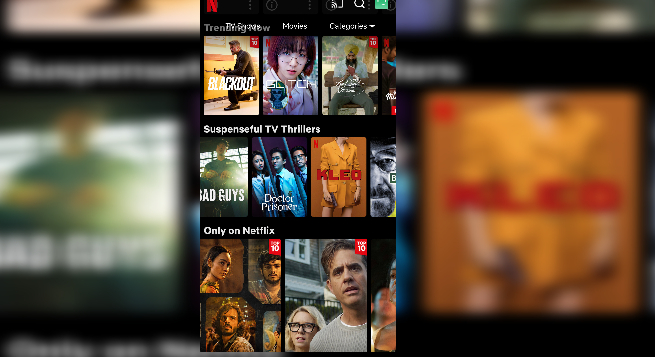Netflix Inc. upended the global entertainment industry about a dozen years ago with a streaming video service that rendered network television programming schedules and movie screening times all but irrelevant.
Now, Netflix is gunning for the last reel of the pay TV business: its estimated $153 billion pool of global advertising revenue.
The company and some analysts see its new, cheaper ad-supported service, detailed in a rosy quarterly report on Tuesday, as a way to lift revenue as customers trim spending amid economic gloom. As TV’s audience shrinks, it becomes less attractive for advertisers, and a plum target for Netflix to disrupt, according to a Reuters report from Los Angeles.
Netflix Co-Chief Executive Reed Hastings said that insight dawned on him after listening recently to former Disney CEO Bob Iger describe traditional TV as marching toward a precipice.
“What I under-appreciated was just the impact on advertisers,” Hastings said during a video interview on Netflix’s third-quarter performance and outlook. The firm’s shares jumped 14 percent after it forecast it would pick up 4.5 million customers in the fourth quarter.
Netflix plans to launch an ad-supported version of its service in the United States and 11 other countries in November. It will be priced at $6.99 a month in the United States, or 30 percent less than its basic ad-free tier, and contain about five minutes of commercials per hour.
Eventually, Netflix, now operating in more than 190 countries globally, aims to provide “personalized” advertising, much as it recommends individualized viewing recommendations.
Chief Financial Officer Spencer Neumann said the new service would make money over time, but cautioned, “It’s going to be pretty small out of the gates.”
Some Wall Street analysts said the ad-supported version of the Netflix service might entice some price-sensitive existing subscribers to switch to the less-expensive option.
That may well work to its advantage in a time of economic volatility. “While the strategic shift may cannibalize its existing market – particularly at the $9.99 tier – it’s a great move in this inflationary environment, where households continue to rationalize their streaming choices,” said Fred Boxa, associate director of consulting firm Arthur D. Little.
Netflix Reverses Subscriber Slump: The streamer reversed customer losses that had hammered its stock this year and projected more growth ahead, reassuring Wall Street as it prepares to offer a new streaming option with advertising.
Shares of Netflix jumped 14 percent Tuesday in the US in after-hours trading, boosted in part by the streaming giant’s forecast that it would pick up 4.5 million customers in the fourth quarter.
“Thank God we’re done with shrinking quarters,” said Hastings, adding the company needs to continue gathering momentum by focusing on content, marketing and a lower-priced plan with advertising.
From July through September, Netflix attracted 2.4 million new subscribers worldwide, more than double what Wall Street expected.
During the quarter, Netflix released the final episodes of season four of sci-fi hit ‘Stranger Things’, plus serial-killer series ‘Dahmer-Monster: The Jeffrey Dahmer Story’, which became one of Netflix’s most-watched series of all time.
The streaming giant is working to kick-start membership growth after a sudden decline in the first half of the year, when the company’s subscriber base shrunk by 1.2 million amid a rocky global economy and growing competition for online video viewers. Netflix now has a total of 223.1 million subscribers around the world.
In its quarterly letter to shareholders, Netflix noted that other media companies are losing money from streaming.
“Our competitors are investing heavily to drive subscribers and engagement, but building a large, successful streaming business is hard,” the letter said.
Netflix estimated that competitors would end 2022 with combined operating losses of “well over $10 billion,” compared with Netflix’s annual operating profit of $5 billion to $6 billion.
For the fourth quarter, Netflix projected revenue of $7.8 billion, a sequential decline it blamed on the strong value of the US dollar.
Netflix did not disclose how many new subscribers, or how much revenue, the company expects from the advertising plan.
Disney, Warner Bros Discovery and other companies also offer, or plan to offer ad-supported options.
While Netflix is making various changes to propel growth, the company said it remained committed to producing original programming and releasing all episodes at once for binge watching.
 TRAI revamps website to connect with wider audience
TRAI revamps website to connect with wider audience  Prime Video to limit in India number of TV sets having access per subscription
Prime Video to limit in India number of TV sets having access per subscription  Delhi HC orders meta to remove deepfake videos of Rajat Sharma
Delhi HC orders meta to remove deepfake videos of Rajat Sharma  Govt. blocked 18 OTT platforms for obscene content in 2024
Govt. blocked 18 OTT platforms for obscene content in 2024  Broadcasting industry resists inclusion under Telecom Act
Broadcasting industry resists inclusion under Telecom Act  Meta faces heat as ChatGPT expands to WhatsApp
Meta faces heat as ChatGPT expands to WhatsApp  Colors Kannada unveils ‘Nooru Janmaku’
Colors Kannada unveils ‘Nooru Janmaku’  Sidharth Malhotra, Janhvi Kapoor unite for romantic film ‘Param Sundari’
Sidharth Malhotra, Janhvi Kapoor unite for romantic film ‘Param Sundari’  Tata Play Binge brings Christmas movie lineup
Tata Play Binge brings Christmas movie lineup  ITG elevates Siddharth Zarabi to BT multiverse Editor
ITG elevates Siddharth Zarabi to BT multiverse Editor 








